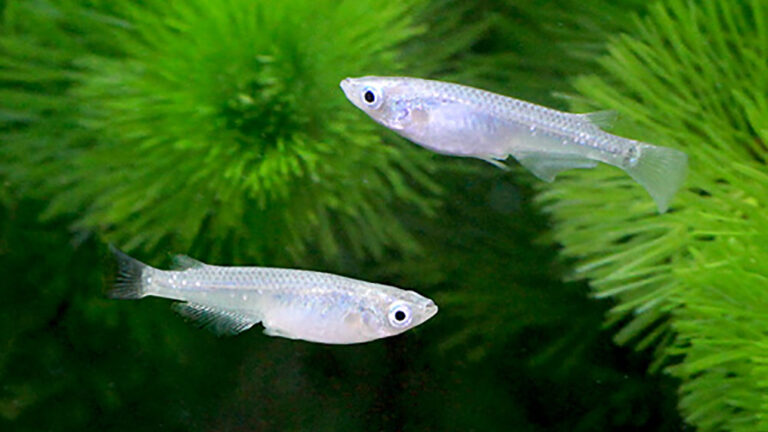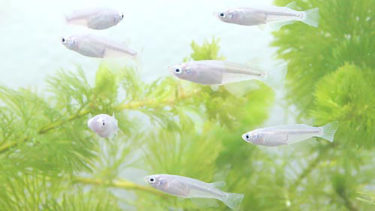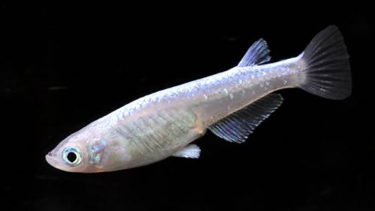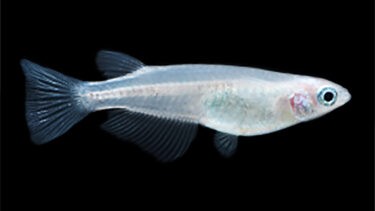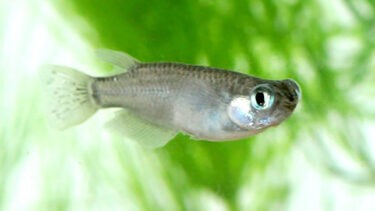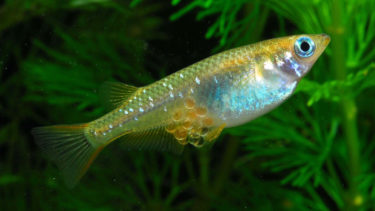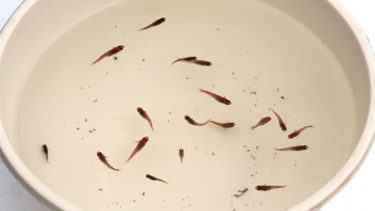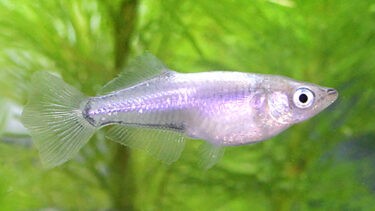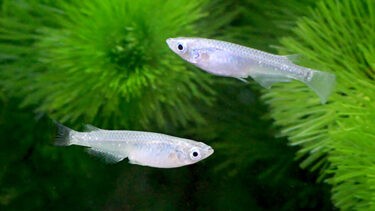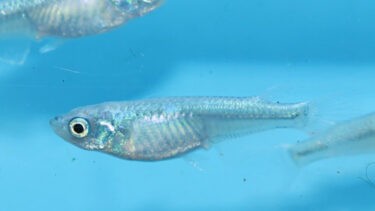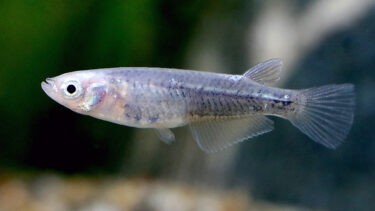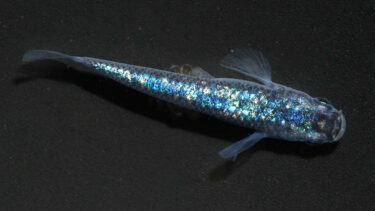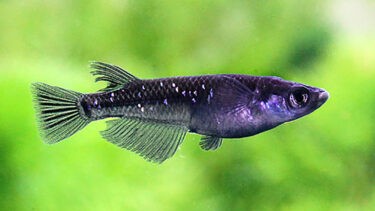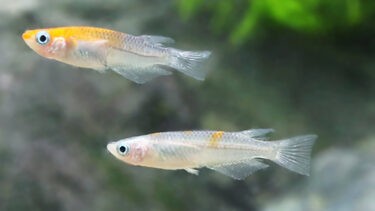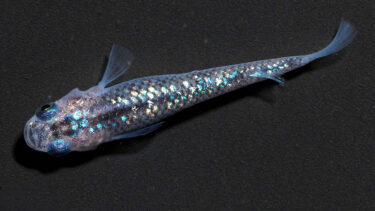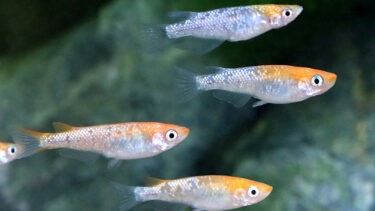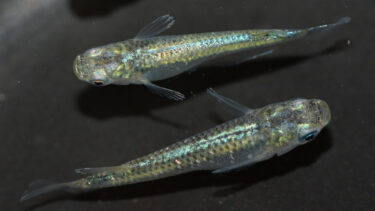The deep-sea killifish is a blue killifish with few black chromatophores. It has the most beautiful blue color among blue killifish. The blue glow of the internal membrane that surrounds the internal organs of the deep-sea killifish stands out even more because the external light of the body has been eliminated. In this article, we would like to explain in detail the characteristics of these deep-sea killifish and how to keep them.
What is deep-sea killifish?
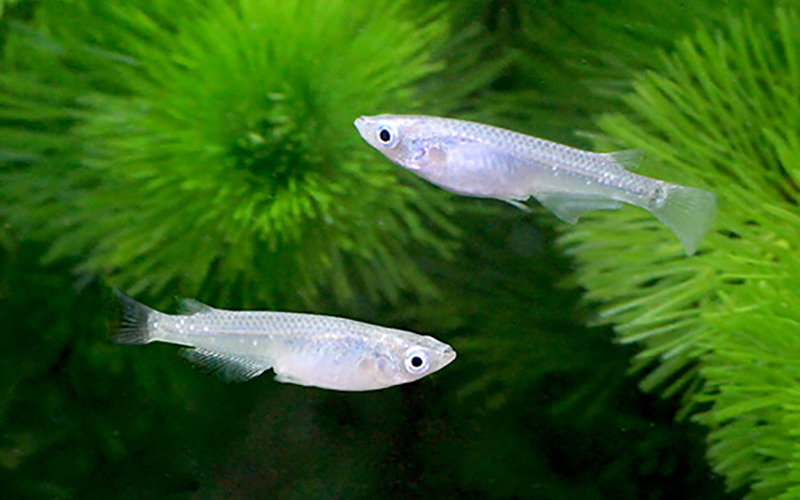
The deep-sea killifish is a blue killifish with few black chromatophores. This makes it the most beautiful blue variety of blue killifish. The deep-sea killifish is a variety created by removing the glowing part of the back (external light) from an individual with a blue-green light (blue trunked killifish).The deep-sea killifish's appearance is enhanced by the blue glow of the inner membrane that surrounds its internal organs due to the loss of external light. This beautiful blue color gives the killifish a very cool and refreshing impression. The deep-sea killifish also has a rare trait called peritoneal blue.
Blue killifish are, as the name suggests, blue. However, among the blue killifish, there are light blue and indigo individuals, making it an interesting killifish. In this article, I would like to explain in detail the characteristics of these blue killifish and how to keep them. Blue killifish are blue [...].
The Mikan-no-Medaka is a killifish with a bright blue glow on its back. There are various types of "Mikan-no-Medaka," including individuals whose body color is like that of blue killifish and white killifish. In this article, I would like to explain in detail the characteristics of these blue killifish and how to keep them. [...].
Origin of the deep-sea killifish

The deep-sea killifish was created by Mr. Ryusei Nagaoka in 2010. It was created by removing the external light on the back, which is a characteristic of the Mikuni killifish, from an individual with a blue-green light (Ao Mikuni killifish). It took several years to remove this light.Therefore, the fixation rate of deep-sea killifish is characteristically high. People are attracted to the fresh blue color of the deep-sea killifish. The fact that there are no similar species to the deep-sea killifish has made it a very popular killifish even today.
The Hyakushiki killifish is a killifish that glows from the inside out and looks divine. The Hyakushiki killifish is transparent from the body to the tip of the tail fin, and glows from within the body. The killifish has transparent scales that allow it to see through the internal membranes of its internal organs [...].
The "deme killifish" is a killifish with both eyes protruding. The protruding eyes vary from individual to individual, with some showing the eyes sideways and others showing the eyes upward. The reason for their popularity is that killifish with protruding eyes have a funny face when seen from the front. This time, the [...].
Points to keep in mind when mixing swimmers
About Mixed Swimming,Some people often think that killifish can only be kept in the same species, but the real appeal of killifish is in combining them. If you are not particular about this, you can mix any kind of killifish with any other kind of killifish.However, it is best to be careful with killifish of different body types (e.g., Dharma killifish and Hirena killifish). If killifish of different body types are mixed with killifish of normal body type, problems such as inability to eat food may occur. However, there are people who mix killifish of different body types with those of normal body types, so there is no need to be concerned.However, each type of killifish, which is considered a high-end killifish, has its own distinctive appearance and shine, so it is recommended to keep them in a way that allows the enjoyment of each individual (type) rather than keeping them in many different species.
Points about spawning
The point about spawning was explained in the above section that keeping a variety of species is the best part of keeping killifish, and having various species swimming together when spawning will naturally produce killifish with the characteristics of various species. However, that is not always a good thing. For example, mixing red and white killifish can produce pink killifish, but not necessarily red or white killifish, or in the worst case, killifish with a color that is hard to describe. If you want red killifish, you should keep only red killifish because the probability of producing red killifish is much higher,I recommend that you think about what kind of killifish you want when spawning and what color and shape you want your killifish to be born, so that you will have less regret and confusion when raising them and find your own way to enjoy them.If it is just a hobby, I think you will enjoy it more if you stick to the methods that you enjoy, regardless of whether people complain about them. The following page explains the method of spawning and points to note, so please read it as well.
Many people who keep killifish want them to spawn. However, not many people know about spawning and what they need to do to prepare for it. This time, we would like to explain the method of spawning and the points to be noted [...].
After the spawning is over, the fry hatch and are born. There are many things to take care of, such as the fry's food and precautions to be taken. In this article, I would like to explain how to raise the fry and what to do about it. The period of time until hatching is over when the spawning is finished and the eggs are [...]...
Points to keep in mind when keeping deep-sea killifish
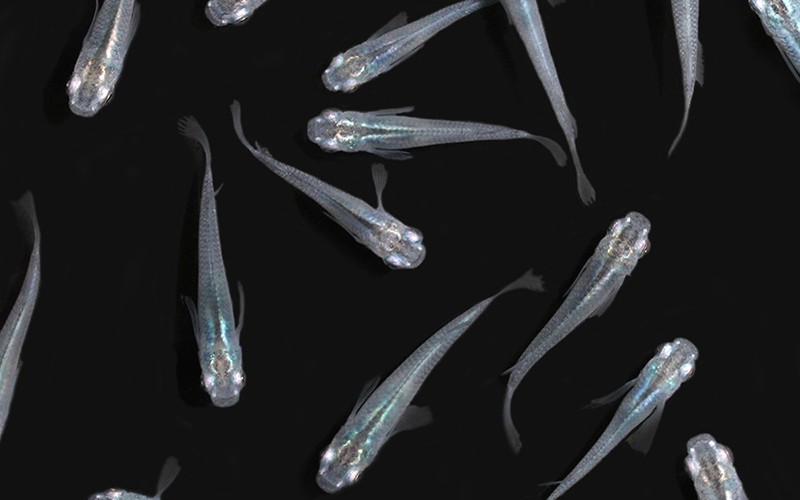
The deep-sea killifish is now a blue killifish with fewer black chromatophores than the blue killifish. The deep-sea killifish was created by removing the glowing area on the back (extra-corporeal light) from a blue-green glowing individual of the trunked killifish (blue trunked killifish). The deep-sea killifish is a variety with the rare trait of peritoneal blue. When keeping killifish, some breeders keep them in black or dark-colored containers because of their ability to change body color depending on the environment (dorsal-ground reaction). However, when keeping deep-sea killifish, the darkening of body color caused by keeping them in black containers (black substrate) may spoil their characteristics and should be avoided.If you really want to make the blue part of the killifish darker, you can keep it in a black container, but you must be careful not to make the other parts of the killifish darker. Deep-sea killifish have a beautiful blue color inside their bodies. If you are interested in deep-sea killifish, we recommend that you take a look at them at a specialty store.
The devil killifish has a body color that is mainly black with purple and gold tints. The dorsal and anal fins have the same rhombic shape, and the back of the killifish has a silvery, shiny, hikari body shape. In this article, I would like to explain in detail the characteristics and how to keep the Demon King killifish [...].

